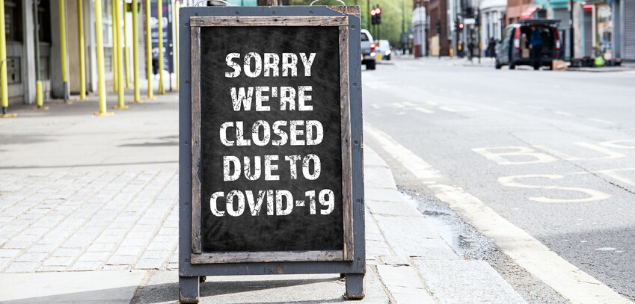Retailers are facing an unprecedented period of uncertainty in the face of the global health crisis. Businesses, brands, employers, and individuals heeding the health authorities’ advice to take the COVID-19 threat seriously are changing how and where they work, live and spend their leisure time, with consequences for every corner of the economy.
In the past few weeks, we’ve witnessed a strange tale of two retail sectors experiencing vastly different conditions. Supermarkets, convenience, pharmacy, and other essential retail sectors have been witnessing a surge in customer demands, as Australians rush to stock up for the months ahead. Whereas, in other sectors, customers have been restricted by multiple factors; they’ve had plans cancelled or postponed, been unable to visit stores, or been influenced by low consumer confidence and cautiousness about opening their wallets.
In these uncertain times, one thing is certain: communication is more critical than ever.
Here are five ways retailers can remain proactive and connect with customers:
A business continuity message
During times of crises and uncertainty, emotions are charged and customers are apprehensive. Now is the time to reassure customers about the continuity of your business while maintaining business as usual. Every business with a website and social presence should have a message on its homepage to communicate its response to the COVID-19 situation, explaining what measures the business is taking in the face of the worsening conditions, including any disruptions to business operations and how the business is looking to move forward.
This will help minimise panic and reduce the number of customer enquiries about orders, shipments, stock, and other information. For bricks–and-mortar retailers, changes to store opening hours or home delivery services should be clearly communicated.
Connect with email
Everyone dreads spam, but relevant and positive email communication is a welcome comfort at times like these. Email marketing is an effective way to provide time-critical information, direct to the customer’s inbox – rather than relying on the individual seeking out information for themselves. It is an ideal way to inform customers about business continuity, current offers and promotions, return policies, and delivery services or provide helpful after-sales tips. Have a solution in place to ensure you are ready and able to respond quickly to an increase in customer service enquiries via email.
Retailers need to be mindful about the danger of sending irrelevant or repetitive emails that drive customers to switch off and unsubscribe. Don’t bombard, overwhelm, or frighten your customers to drive sales. Be compassionate, authentic, and transparent so that customers understand what you can or cannot provide, or any changes to products and services.
Consistent content for online and social channels
Retailers operate in an omnichannel world and consistency is key! Content on the retailer’s online store and social channels should be current and clear, aligned with email and other channel messages. Don’t prioritise one channel over another. Clear, consistent information is crucial now, especially for new customers, or people who may not be familiar with online shopping and may be visiting the brand’s social channels or online store for the first time. Look for any gaps and ensure frequently asked questions (FAQs) are up to date – even with basic information such as warehouse location, preventative measures, shipping times, exchange, and returns.
Personalised, targeted communication
It’s more important than ever to be personal. Retailers should harness customer data to create more meaningful, valuable communication – across every channel. Customer data gives retailers valuable intelligence, enabling the brand to better understand their customers’ needs and predict what information will be most helpful at present. Data provides the invaluable opportunity to segment customers and deliver more targeted communication. This way, retailers will be able to tailor their messages, helpfully steering the customer towards the exact solution they may need right now.
Live chat
Live chat is one of the best ways to create a timely, personal service online – the closest thing to a bricks-and-mortar experience. Live chat solves the problem when customers are looking for a helpful, quick answer in real time. Live chat is a reassuring, calm voice, meeting the needs of the customer at the crucial point of sale, creating a smooth, positive, and memorable customer experience. This service offering is now essential, even for small purchases, and customers may be reluctant to place an order if they have a query that no one can answer there and then.
Taking measures to improve communication is one practical way to manage the unfolding and distressing situation, keeping customers engaged and connected. More than ever, retailers need to show leadership and compassion through effective, reassuring communication while continuing to provide a valuable service at a time of social isolation.
Rohan Lock is the Regional Director, APAC, at dotdigital.
Keep up to date with our stories LinkedIn, Twitter, Facebook and Instagram.

